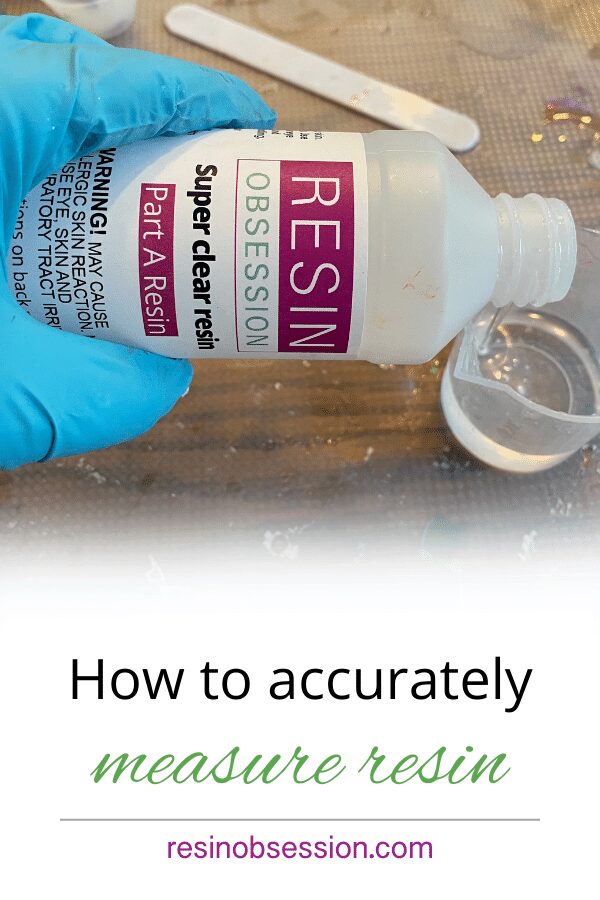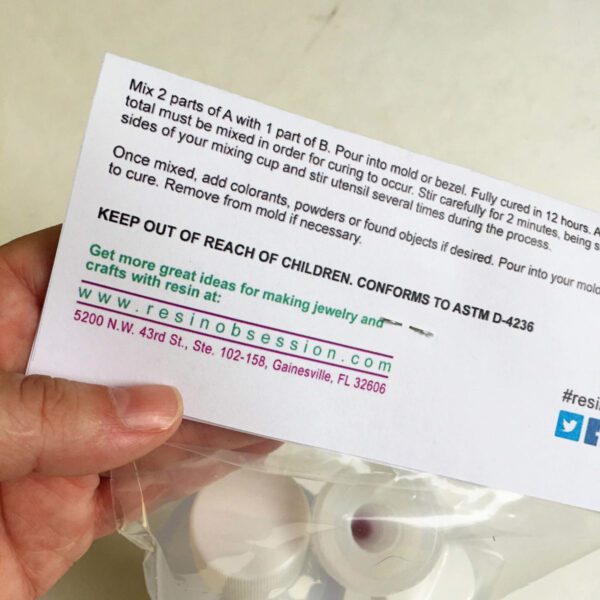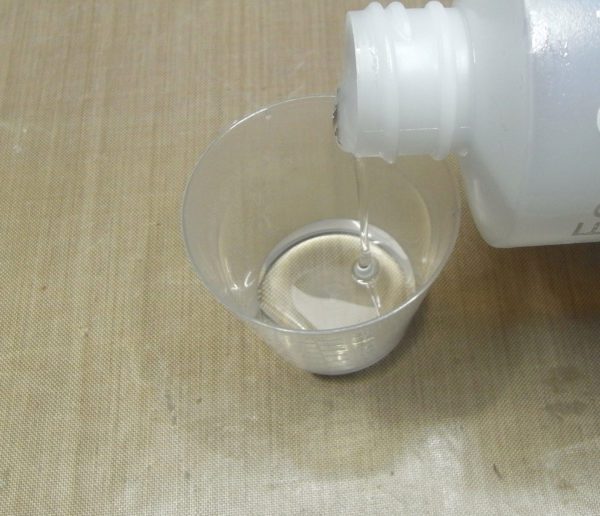So you’ve heard me talk a lot about mixing resin so it cures without sticky spots. (The #1 resin beginner mistake.) But it’s important you accurately measure resin liquids too.
Why is it important that you measure resin accurately?
If you don’t have enough of each of the liquids, you’re resin won’t get hot enough to cure. And you might end up with a rubbery resin revelry.
But too much of the liquids can cause your resin to flash cure within a minute or two. And this is one of the few times you have to worry about your resin catching fire.
(Even slow-curing resin can overheat and crack.)
So you must measure resin precisely.
How do you do that?
Step 1: Read your resin kit’s instructions.
The instructions will tell you:
*the ratio to mix the resin (so many parts of A to so many parts of B)
*how to measure the resin (usually by volume)
Don’t deviate from these instructions without getting guidance from the resin manufacturer.
That means
❌ You shouldn’t measure more hardener than the instructions call for because you want the resin to cure faster.
❌ You shouldn’t measure resin by weight without the manufacturer telling you how to do that. Hardener weighs more than resin so you’ll use it up faster than you should instead of measuring by volume. Plus, you up your risk of overheating the resin.
❌ You shouldn’t measure outside of the smallest and largest mixing amounts for the resin and hardener. If you do, it may not cure.
Step 2: Pour the liquids into graduated measuring cups.
These cups have calibrated lines on them to ensure you measure the right volume of resin.
Should you use one cup or two?
I recommend using two cups.
Why?
That way if you overpour one, you can pour the liquid back into its original container. Otherwise, you’ll have to guess how much extra liquid you need to add to make up for the overpour. Trust me. You’ll end up wasting more product.
💡 Pro tip: You can clean and reuse measuring cups for your next resin project.
What if you’ve tried mixing resin by volume and can’t get great results?
Go through this resin troubleshooting list. It details everything that could be going on and what you can do differently.
So now that you know what to do moving forward, what happens if you’ve got unequal amounts of resin liquids leftover?
Do dispose of them safely. That means taking them to a center that collects paint, electronics, and other items that shouldn’t go in household trash
Don’t use them when you open a new resin kit. Always start with new bottles and fresh liquids.
Overwhelmed with all the information you need to know about resin before you even open a bottle?
It’s okay. I was in the SAME SPOT when I started crafting with epoxy 17 years ago. It’s why I wrote the resin beginner book, Resin Fundamentals. I share all the details I wish I had known when I started with resin. (instead of learning them through trial and error) Buy the PDF book now and get an email download link in minutes.
Unpublished Blog Posts of Resin Obsession, LLC © 2024 Resin Obsession, LLC





I see so many asking how to accurately measure by weight. I have never run into a resin that required that so I am curious. Do some just choose to use weight rather than volume? Are there resins that require weight instead of volume? If so, what is an accurate way to know the ratios needed?
Most resins will tell you the ratio right on the label, but some people don’t trust their eight sight (like myself!) and prefer to use the scale to make sure we are doing the correct ratios! It’s all personal preference!
You mentioned how you measure by weight due to eye sight, can you explain how you use a scale to measure weight, even if it states volume?
In most cases epoxy is mixed in a ratio. You can use a scale to measure equal weights to get the perfect ratio.